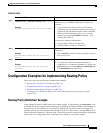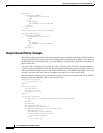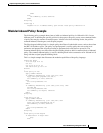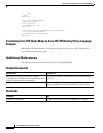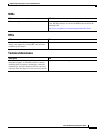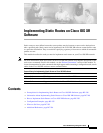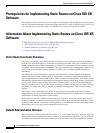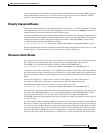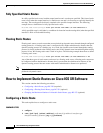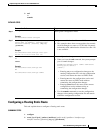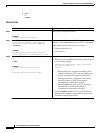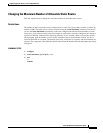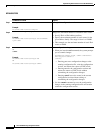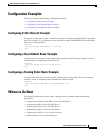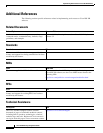
Implementing Static Routes on Cisco IOS XR Software
Information About Implementing Static Routes on Cisco IOS XR Software
RC-249
Cisco IOS XR Routing Configuration Guide
routes. For example, you could have routes installed by the Open Shortest Path First (OSPF) protocol
with an administrative distance of 120. To have a static route that would be overridden by an OSPF
dynamic route, specify an administrative distance greater than 120.
Directly Connected Routes
The routing table considers the static routes that point to an interface as “directly connected.” Directly
connected networks are advertised by IGP routing protocols if a corresponding interface command is
contained under the router configuration stanza of that protocol.
In directly attached static routes, only the output interface is specified. The destination is assumed to be
directly attached to this interface, so the packet destination is used as the next hop address. The following
example shows how to specify that all destinations with address prefix 2001:0DB8::/32 are directly
reachable through interface GigabitEthernet 0/5/0/0:
RP/0/RP0/CPU0:router(config)# route ipv6 unicast 2001:0DB8::/32 gigabitethernet 0/5/0/0
Directly attached static routes are candidates for insertion in the routing table only if they refer to a valid
interface; that is, an interface that is both up and has IPv4 or IPv6 enabled on it.
Recursive Static Routes
In a recursive static route, only the next hop is specified. The output interface is derived from the next
hop. The following example shows how to specify that all destinations with address prefix
2001:0DB8::/32 are reachable through the host with address 2001:0DB8:3000::1:
RP/0/RP0/CPU0:router(config)# route ipv6 unicast 2001:0DB8::/32 2001:0DB8:3000::1
A recursive static route is valid (that is, it is a candidate for insertion in the routing table) only when the
specified next hop resolves, either directly or indirectly, to a valid output interface, provided the route
does not self-recurse, and the recursion depth does not exceed the maximum IPv6 forwarding recursion
depth.
A route self-recurses if it is itself used to resolve its own next hop. If a static route becomes
self-recursive, RIB sends a notification to static routes to withdraw the recursive route.
The following example shows how to define a recursive IPv6 static route:
RP/0/RP0/CPU0:router(config)# route ipv6 unicast 2001:0DB8::/32 2001:0DB8:3000::1
This static route is not inserted into the IPv6 routing table because it is self-recursive. The next hop of
the static route, 2001:0DB8:3000:1, resolves through the BGP route 2001:0DB8:3000:0/16, which is
itself a recursive route (that is, it only specifies a next hop). The next hop of the BGP route,
2001:0DB8::0104, resolves through the static route. Therefore, the static route would be used to resolve
its own next hop.
It is not normally useful to manually configure a self-recursive static route, although it is not prohibited.
However, a recursive static route that has been inserted in the routing table may become self-recursive
as a result of some transient change in the network learned through a dynamic routing protocol. If this
occurs, the fact that the static route has become self-recursive will be detected and it will be removed
from the routing table, although not from the configuration. A subsequent network change may cause
the static route to no longer be self-recursive, in which case it will be re-inserted in the routing table.



